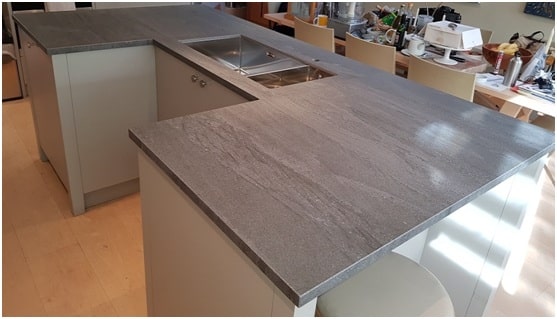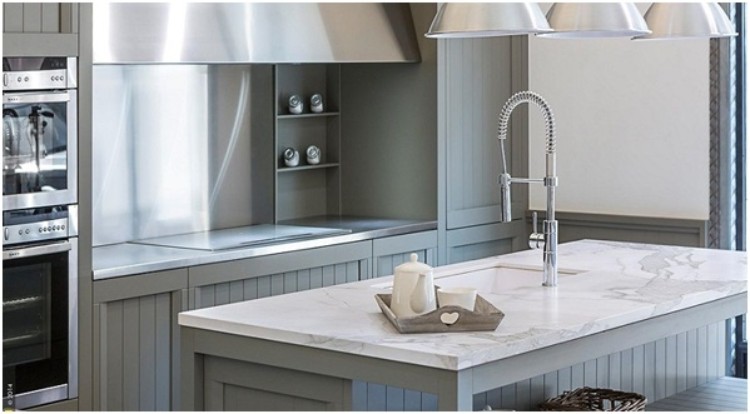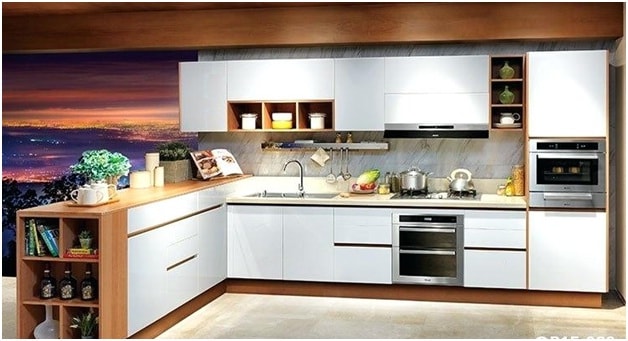Neolith sintered stone offers greater performance compared to porcelain. Therefore, many modern homeowners prefer it. However, you need to understand the differences between Neolith and porcelain worktops before making the buying decision.
With various surface materials available in the market, it has become challenging to understand the resistance and performance qualities of different worktop materials. However, the initial confusion lies between ceramics, particularly porcelain worktops, and sintered stone worktops or Neolith UK.
Neolith is considered to be one of the leading market brands offering sintered stone. It is known for its high aesthetic qualities and unrivalled resistance that make a lasting impression on designers, architects and fabricators worldwide.
Due to the superior format variety and manufacturing process, Neolith worktops are known to provide higher performance across the board. Therefore, it is becoming a popular material for different surface applications and also replacing many porcelain products.
Why the Confusion between Neolith and Porcelain?
Both Porcelain and Neolith London are heated just before their point of liquefaction and further cured in the form of a tile or slab. But the significant difference lies in the purpose of their manufacturing processes.
The traditional porcelain worktops are focused on manufacturing smaller format tiles. But with changing demands of modern customers, they started scaling of their product lines in larger tile formats. Moreover, thin and brittle tiles are found to be more suitable for vertical, as well as horizontal, surface applications.

Neolith London worktops are designed for different surface applications. They are formatted in 1-3 cm thickness with a perfect swap of conventional stone designs, such as granite and quartz. However, Neolith worktops are considered to be far more superior to other worktop materials found in the market.
What are the significant differences between porcelain and Neolith worktops?
Evolution of Design
Porcelain worktops have been around for ages now. With ¼” thickness, these porcelain tile materials boast unique surface designs to spruce up handcrafted but machine printed designs on their surface. The pattern on porcelain is printed or glazed only on the surface. These tiles, however, are being up-scaled recently for addressing more and more modern applications where grout lines and seams are not desired.
Sintered stone worktops or Neolith, on the other hand, are replacing different worktop materials like quartz or porcelain. It is because sintered stones come up with some fantastic benefits of quartz. However, patent-protected manufacturing technology makes it superior to even quartz surfaces. That’s why sintered stone is being positioned as the “next big thing” in kitchen renovation projects.
Aesthetics
The significant advantage of porcelain tiles is that you can print any desired design on its surface. But the problem is that the edges may not match perfectly with the printed surface. So, you have to compromise with the uniform look.
On the other hand, Neolith’s worktops are manufactured to boast through-body patterning. It means the edges of the surfaces are likely to match the natural body and exterior of the material. It enables the worktop to have a perfect edge pattern that matches the body of the surface.
Some Neolith designs like Neolith Estatuario and Neolith Calacatta are also designed to mimic the pattern of natural stones. The realistic design and texture of these surfaces help them to connect with clients. Therefore, this worktop material is becoming popular across the globe.
Environment
Sintered stones like Neolith iron-grey are designed keeping sustainability in mind. Their reclamation and recycling processes are led by advanced technology that creates durable and high-performance products.
Some stylish Neolith Betosurfaces also incorporate technology to clean the air. Moreover, they are also resistant to UV rays and even natural chemical compounds to enable the breakdown of pollutants by 100 square meters that’s equivalent to 28 trees in one-third of the time.
On the other hand, porcelain tiles are designed to look visually appealing and don’t integrate any technology regarding health or environmental concerns.









